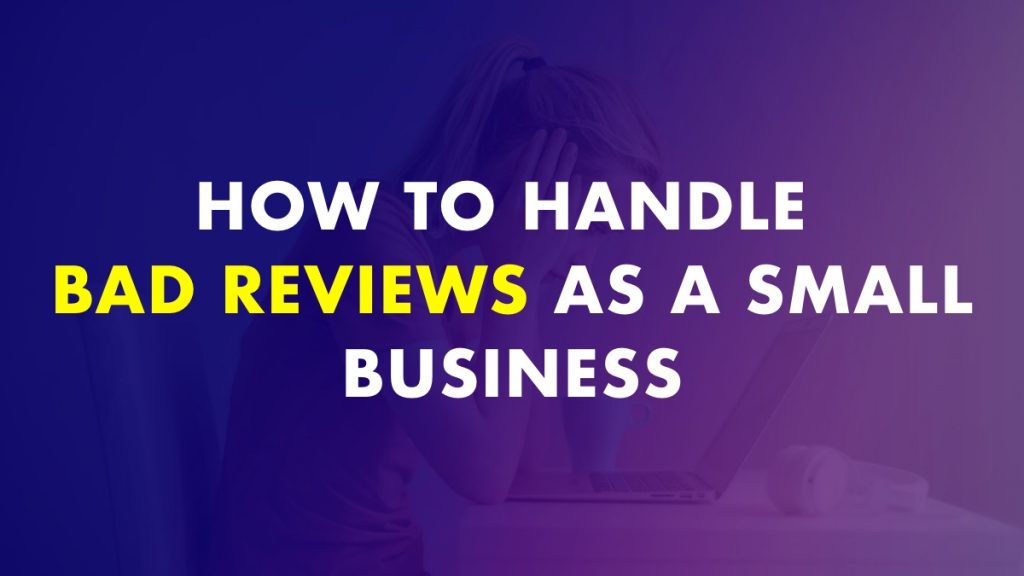Getting a bad review can be emotionally devastating for a small business owner. Since customer reviews are what build your business’s reputation, a bad review can put off potential customers from doing business with you. While that sounds scary, a bad review isn’t a death sentence for your venture.
How you address bad reviews can be an opportunity for you to show how much you truly care about your customers, and it can actually become a positive experience. Remember, even the best companies get their fair share of negative reviews.
Negative Reviews Can Actually Be a Good Thing
It may seem counterintuitive, but having a few negative reviews can be good for your business. You see, having a few bad reviews shows that the business is authentic.
If something had a perfect 5-star rating, it would look fake, which is a red flag for any potential customer. And with nearly 9 in 10 consumers saying online reviews are just as important as personal recommendations, showing authenticity is crucial. You don’t have to have a perfect 5-star rating to attract customers, either. As long as a business receives at least four stars, 92% of consumers are willing to do business with that establishment.
Other positive effects of negative reviews include providing authentic SEO, boosting search engine result page visibility, strengthening digital marketing strategies, and improving business operations and profits.
How To Properly Handle Bad Reviews
Negative reviews may make some people hesitate to do business with you. But by taking the necessary steps to deal with the negative reviews, you’ll be able to build trust with both your current and potential customers.
1. Do not delete the negative review
You get an email to notify you that someone left a Google review of your business. Upon opening it, you find a 1-star review followed by some disheartening words. What do you do?
While your first reaction may be to delete the negative review to avoid a bad reputation, don’t do it. Do not delete the negative review. Do not ignore it either. Allow it to be your opportunity to showcase the good things about your business.
2. Respond promptly and publicly
Responding to the negative review as soon as possible shows that you’re handling it as an urgent matter. It makes the aggrieved customer feel seen and heard.
Your public response to the review should acknowledge their feedback and inform them that you’re taking the necessary actions to look into the matter and address it. It doesn’t matter if you don’t have the full story of what went wrong. What matters is you’ve let them know that you’ve read their review.
A prompt response can help reduce any raging emotions on either side before it becomes overwhelming. Your quick response will also be seen by other customers, giving them a positive impression of your business.
3. Reach out privately
After you’ve made your sincere public apology, follow up with the reviewer privately. You can reach out to them through email or direct message to get to the heart of the matter.
Defending your business may be your first instinct, but you have to be patient, always remaining polite. Any rude or condescending tones in your reply might make the situation worse. Remember, they can take screenshots of your correspondence.
At this point, if emotions are still running high, it is best to have the customer let it all out. Then you can address these problems one by one.
4. Protect your staff and promote a positive image of your business
Now that they have shared their side of the story, you can start rectifying any mistakes.
After you’ve made a sincere apology, you can let them know that their experience was rare and definitely something that raised your alarms. This is the part where you can highlight some of your business’s positive traits in a tactful manner. You can tell them about your stringent production operations, your team’s dedication to their work, or all the thought and care you put into your product design.
Not only does it shift the tone of the conversation to be less emotionally charged, but you’re still validating their experience while also protecting your business. You’re also supporting your team and showing how much you value them.
5. Resolve the problem
While a written apology is nice, rectifying the problem is always a good way to apologize. It also strengthens the personal relationship your business has with the customer.
Find the quickest and most logical solution to address the immediate problem. You can help them track their package, issue a refund, replace the item, or offer a discount for their next purchase.
However, do make sure to keep an eye out for certain toxic customers that would write up all sorts of negative reviews and criticisms to try and get something out of it. While they can be frustrating to deal with, be the bigger person. Do enough to address their problem and move on.
6. Thank them
In a 2022 survey conducted by ReviewInc, 65% of people do not leave negative reviews after having a bad experience. So when a person takes the time to reach out to you to let them know of their experience, good or bad, be sure to thank them.
7. Learn from this experience
Customer feedback is important and incredibly valuable. Receiving negative reviews allow you to find areas of improvement in your business.
From here, you can change certain operations, adjust production, or revise product designs. You can also improve your customer service by creating formal refund and return policies or hosting regular customer service training for your team.
A negative review doesn’t have to be just that. With a bit of quick action and courteousness, you’re able to turn a bad experience into a positive one for everyone involved.
